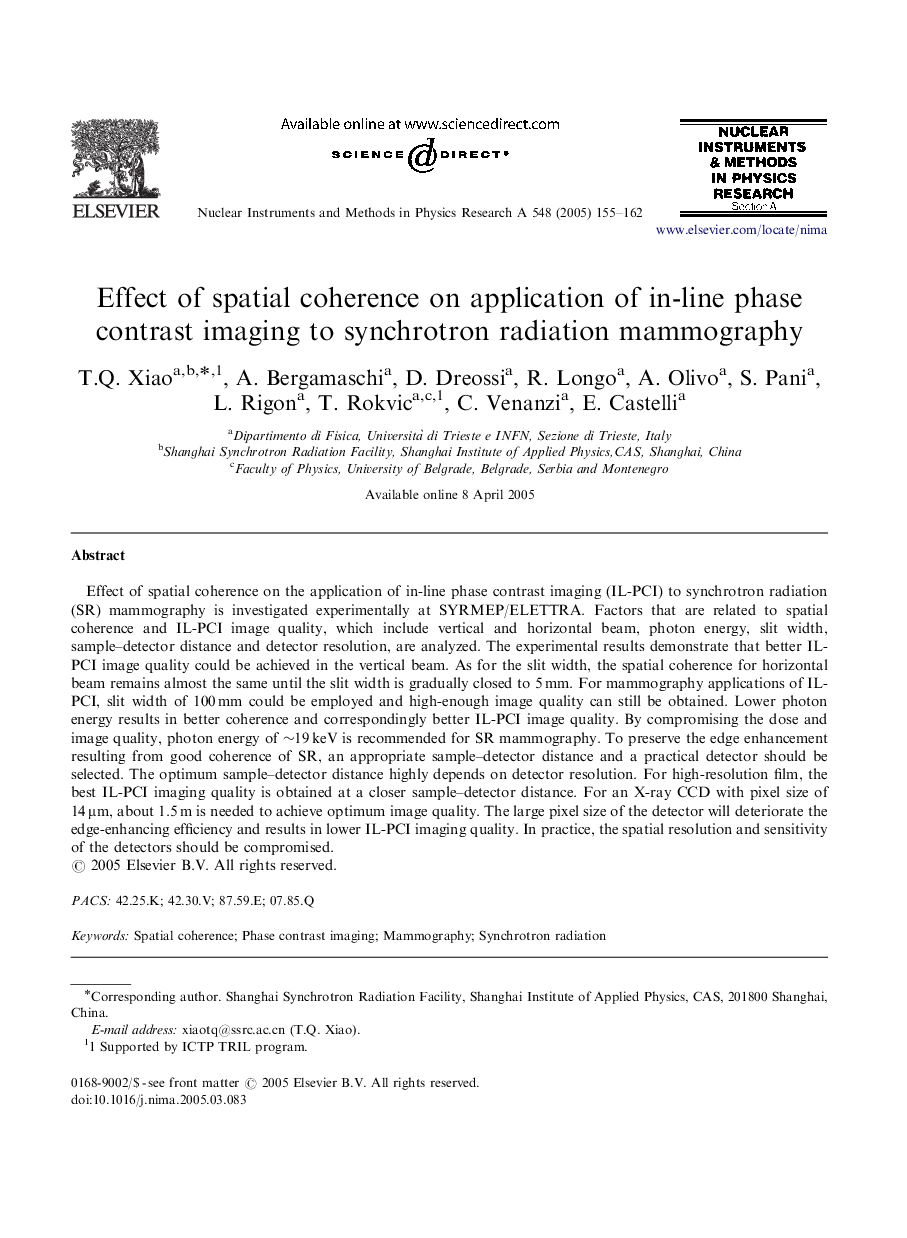| Article ID | Journal | Published Year | Pages | File Type |
|---|---|---|---|---|
| 9845243 | Nuclear Instruments and Methods in Physics Research Section A: Accelerators, Spectrometers, Detectors and Associated Equipment | 2005 | 8 Pages |
Abstract
Effect of spatial coherence on the application of in-line phase contrast imaging (IL-PCI) to synchrotron radiation (SR) mammography is investigated experimentally at SYRMEP/ELETTRA. Factors that are related to spatial coherence and IL-PCI image quality, which include vertical and horizontal beam, photon energy, slit width, sample-detector distance and detector resolution, are analyzed. The experimental results demonstrate that better IL-PCI image quality could be achieved in the vertical beam. As for the slit width, the spatial coherence for horizontal beam remains almost the same until the slit width is gradually closed to 5 mm. For mammography applications of IL-PCI, slit width of 100 mm could be employed and high-enough image quality can still be obtained. Lower photon energy results in better coherence and correspondingly better IL-PCI image quality. By compromising the dose and image quality, photon energy of â¼19 keV is recommended for SR mammography. To preserve the edge enhancement resulting from good coherence of SR, an appropriate sample-detector distance and a practical detector should be selected. The optimum sample-detector distance highly depends on detector resolution. For high-resolution film, the best IL-PCI imaging quality is obtained at a closer sample-detector distance. For an X-ray CCD with pixel size of 14 μm, about 1.5 m is needed to achieve optimum image quality. The large pixel size of the detector will deteriorate the edge-enhancing efficiency and results in lower IL-PCI imaging quality. In practice, the spatial resolution and sensitivity of the detectors should be compromised.
Keywords
Related Topics
Physical Sciences and Engineering
Physics and Astronomy
Instrumentation
Authors
T.Q. Xiao, A. Bergamaschi, D. Dreossi, R. Longo, A. Olivo, S. Pani, L. Rigon, T. Rokvic, C. Venanzi, E. Castelli,
